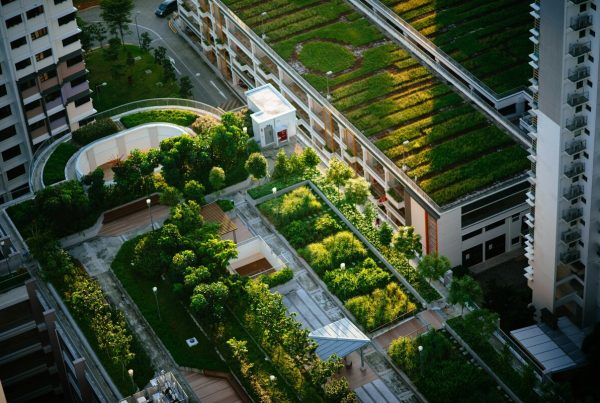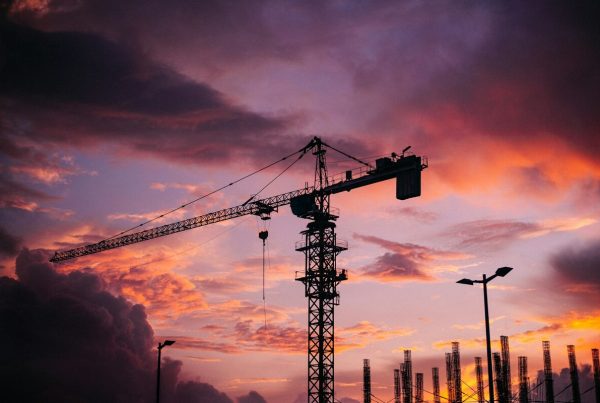An interesting article appeared on Wired last week about China’s overuse of cement for the past three years. Let’s just say, it’s a lot.
Using some heavy scientific calculations, the author, Rhett Alain, was able to figure out an estimate of China’s cement use. And just to drive home the point, he also made two illustrations of those gigatons of cement when combined in bulk—first a massive, featureless cube of cement boldly jutting out of Chicago’s skyline. And the second, the entire surface area of Hawaii, completely covered in cement.
Cement Overload
Those illustrations are indeed fascinating, powerful even. A graph or a chart or even an infographic would have been lame. Something of this scope had to be distilled into a more blatant image, so we can have an idea of it in real world terms.
Thus—a humongous cement cube and an entire island engulfed in cement.
Charming as they are, they point to a much larger issue. Is China really using way too much cement? And is sustainable cement really possible or really just an oxymoron?
Cementing the Problem
There’s an awful lot of carbon emissions that go with traditional cement: up to 5{e3829ec1db02d54faaf9fa2de0d48db26af01d7a7944a63c3b26976124791cab} – 6{e3829ec1db02d54faaf9fa2de0d48db26af01d7a7944a63c3b26976124791cab} of man-made global emissions every year). This is inevitably due to the chemical reactions and extreme heat needed to manufacture it. In some ways those carbon emissions are a necessary evil which makes possible the concrete we use for our buildings, highways, bridges, dams, and other structures.
Thankfully, manufacturers have been efforts to make greener and more sustainable cement.
Nanotechnology—a field that’s steadily revolutionizing many aspects of science and industry—is currently the best hope for making cement sustainable, i.e. reducing it’s CO2 emissions, giving it high-strength and flexibility, making it crack-resistant and water-proof and even carbon-absorbent as it cures. As of 2012, there were 368 patents for nanotechnology applications to cement.
One ingenious hack in cement involves infusing it with bacteria that gets activated when wet which then “heals” the hairline cracks that form on the surface and within.

The laborious energy-intensive process of cement manufacture (chart by Canadian cement company Lehigh)
Also, major cement producers have banded up since 2002 to create the Cement Sustainable Initiative. The goal is to green up the process of cement manufacture both as joint ventures and as individual companies. One aspect of it is co-processing alternative fuel sources such as waste to fire up the kiln for cement-making.
Clearly, there’s many rooms for improvement for the world’s most used man-made material.
Checks in Place
Then again, all those improvements in sustainable cement would be for naught if both cement production and demand for cement has no checks in place. Engineering professor Julian Allwood of Cambridge University in a 2007 interview notes that,
“If demand doubles and the best you can do is to reduce emissions by 30{e3829ec1db02d54faaf9fa2de0d48db26af01d7a7944a63c3b26976124791cab}, then emissions still rise very quickly.”
At that time, China makes and uses 45{e3829ec1db02d54faaf9fa2de0d48db26af01d7a7944a63c3b26976124791cab} of the global output of cement. Seven years later, and demand for cement is indeed greater than ever. Right now, China is in a position to indulge in a frenzy of building constructions—its robust global economy demands it. But let’s not mistake that abundance for true progress.
We’re not here to vilify cement. It’s a terrific bonding agent for concrete which transforms into a good building material that’s durable, versatile, fire-resistant, with good insulation and thermal mass. The goal here now is to make sustainable cement even better than it already is. And then use that to build consciously stronger structures that can last for decades, and can be reused and repurposed if needs be. That way, we can at least make up for all those carbon footprint.
Last year, poor quality Chinese concrete made the news. That’s certainly saddening for the environment, and altogether alarming—after all, those collapse-prone buildings could claim lives. China in fact is home to many buildings made circa ’80s and ’90s that were hastily designed and constructed and are now collapsing at the slightest seismic quakes. Whether that’s a “planned obsolescence” (just like gadgets), or simple carelessness, we’ll never know.
One thing is for sure: all those carbon emissions will bite us one of these days.
| Sources
http://www.theguardian.com/sustainable-business/sustainable-green-buildings-concrete
http://www.concretenetwork.com/concrete/greenbuildinginformation/what_makes.html
http://www.wbcsdcement.org/












